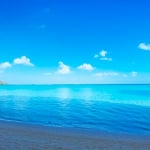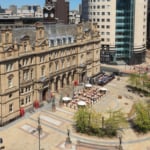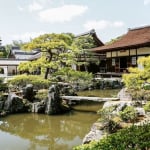Name: Glover Garden
Address: 8-1 Nanyamatecho, Nagasaki City, Nagasaki Prefecture
Official Site: http://www.glover-garden.jp/
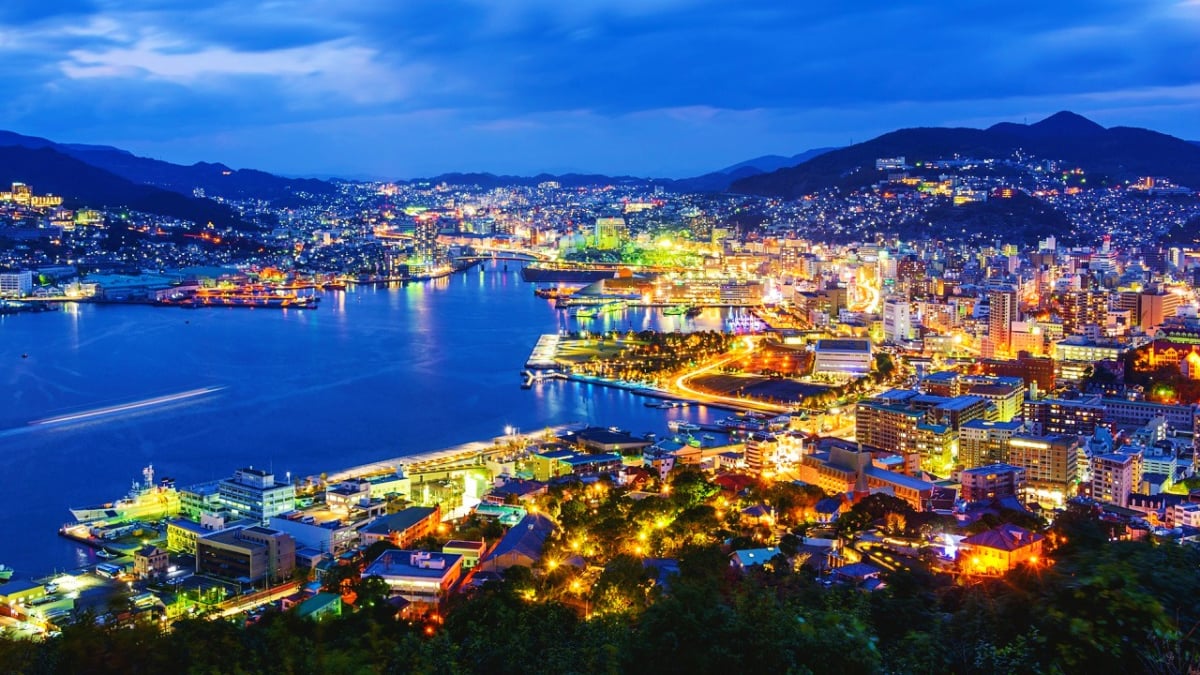
Exotic Historic Streetscapes That Captivate! 20 Must-Visit Tourist Attractions in Nagasaki City
What comes to mind when you think of Nagasaki City? Foreign influences, unique cuisine, historical sites, the atomic bombing… the list goes on. As a tourist destination with many facets, Nagasaki continues to fascinate countless visitors from both Japan and abroad with its wealth of attractions. Here, we carefully introduce Nagasaki’s unmissable tourist spots—from Glover Garden to Peace Park—so you can experience the best that the city has to offer!
table of contents
[x] close
Exotic Historic Streetscapes That Captivate! 20 Must-Visit Tourist Attractions in Nagasaki City
- 1. Glover Garden
- 2. Oura Church
- 3. Nagasaki Electric Tramway
- 4. Peace Park
- 5. Nagasaki Atomic Bomb Museum
- 6. Inasa-yama
- 7. Dejima Dutch Trading Post Ruins
- 8. Nagasaki Dejima Wharf
- 9. Gunkanjima (Hashima)
- 10. Nagasaki Shinchi Chinatown
- 11. Fuuto Park
- 12. Nagasaki Kameyama Shacho Memorial Hall
- 13. Shian Bridge
- 14. Urakami Church
- 15. Nagasaki Confucius Temple
- 16. Higashiyamate Western-Style Residential District
- 17. Megane Bridge
- 18. Bunmeido Sohonten
- 19. Shooken Main Store
- 20. Amu Plaza Nagasaki
- ◎ Summary
1. Glover Garden
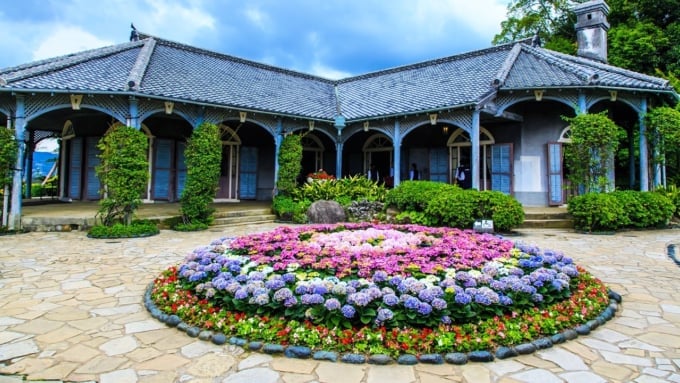
Nagasaki is a city where Japanese, Western, and Chinese cultures come alive, and one of its signature attractions is Glover Garden. Named after Thomas Glover, a Scottish merchant who introduced modern Western technologies such as shipbuilding and iron production to Japan, this garden began with his residence built in 1863.
Within the garden, you’ll find the former Glover Residence along with other Western-style buildings constructed from the late Edo through the Meiji era. The retro Western architecture harmonizes beautifully with seasonal blooms like tulips and cosmos. Additionally, the garden’s retro photo studio offers costume rentals at affordable prices—try on a lavish, classic dress and capture memories against the backdrop of these elegant old houses.
2. Oura Church

Oura Church is Japan’s oldest Christian church, with a history spanning over 150 years since its construction in 1865. It was built on the hillside of Nishizaka to honor the 26 martyrs who were executed in Nagasaki in 1597 on the orders of Toyotomi Hideyoshi.
Its atmospheric exterior is impressive, and inside you’ll find stunning stained glass windows depicting Christ on the cross, oil paintings illustrating the martyrdom of the 26 saints, and a rib-vaulted ceiling crafted in a uniquely Japanese style using bamboo and lacquer. Being located right next to Glover Garden adds to its appeal—together, they form the classic Nagasaki sightseeing route. Immerse yourself in this nostalgic Western world!
Name: Oura Church
Address: 5-3 Nanyamatecho, Nagasaki City, Nagasaki Prefecture
Official Site: http://www1.bbiq.jp/oourahp/
3. Nagasaki Electric Tramway
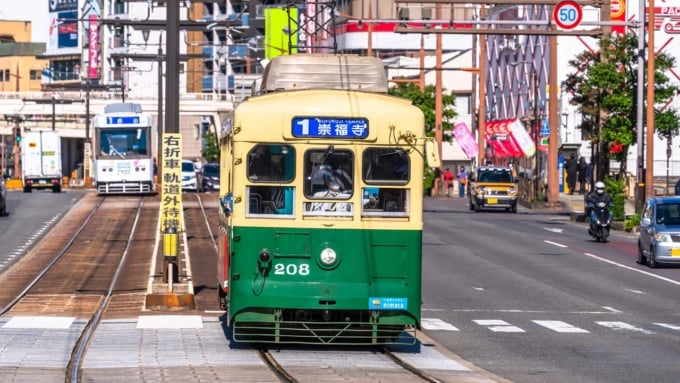
For over 100 years, the Nagasaki Electric Tramway has served as a vital means of transport for Nagasaki residents and tourists alike. Running through the historic streets, the sight of these retro trams often inspires visitors to take a ride.
With five lines operating throughout the city, many tourist spots are easily accessible solely by tram. Enjoy the nostalgic charm of the vintage vehicles as they take you on a journey through Nagasaki’s most famous landmarks. Fares are the same no matter where you travel within the city, and a one-day pass is available for added convenience.
Name: Nagasaki Electric Tramway
Address: 4-5 Oohashimachi, Nagasaki City (Head Office)
Official Site: http://www.naga-den.com/
4. Peace Park
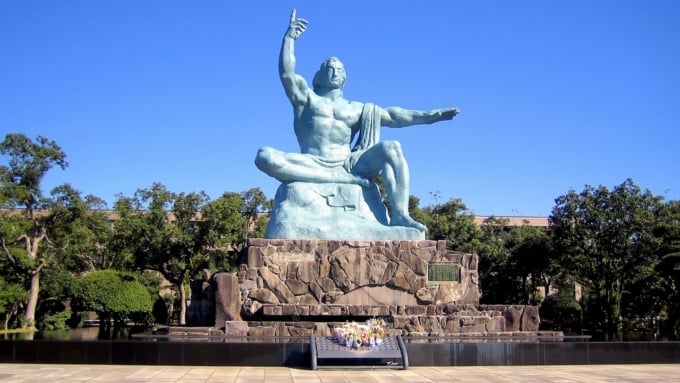
Created to ensure that the tragedies of war and the horrors of the atomic bombing are never forgotten, Peace Park is an essential landmark for any discussion about Nagasaki.
The park’s centerpiece is the 9.7-meter-tall Peace Statue, which poignantly symbolizes the terror of the bombing with its right hand and peace with its left, while its closed eyes offer a moment of silent tribute to the victims.
In front of the statue stands the Fountain of Peace, built to offer water to the spirits of the bombing victims. Every year on August 9, a ceremony is held in the park to pray for lasting world peace—a place that invites deep reflection on war and peace.
Name: Peace Park
Address: 2400-3 Matsuyamachi, Nagasaki City, Nagasaki Prefecture
Official Site: http://www.nagasaki-tabinet.com/detail/index_130.html
5. Nagasaki Atomic Bomb Museum
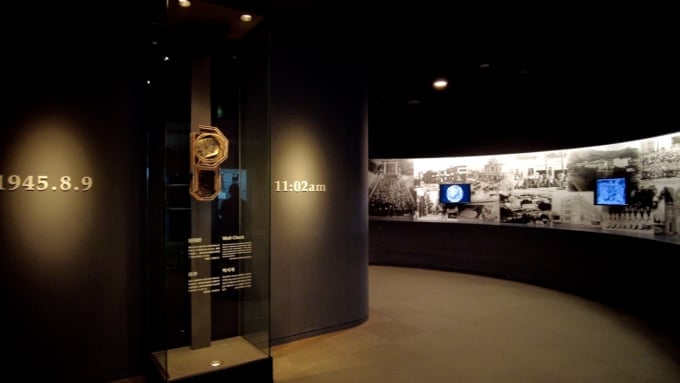
On August 9, 1945, the “Fat Man” atomic bomb was dropped on Nagasaki. The Nagasaki Atomic Bomb Museum displays approximately 1,500 items that vividly convey the devastation of that day, ensuring that the memory of the tragedy is never lost.
Inside, you can see a clock frozen at 11:02—the moment the bomb was dropped—along with a model of Urakami Church, which was heavily damaged in the blast, and footage shot immediately after the bombing. For a deeper understanding, volunteer guides known as “Peace Ambassadors” are available (by reservation) to explain the exhibits and the events of that day in clear detail.
Name: Nagasaki Atomic Bomb Museum
Address: 7-8 Hiranocho, Nagasaki City, Nagasaki Prefecture
Official Site: http://nagasakipeace.jp/japanese/abm.html
6. Inasa-yama
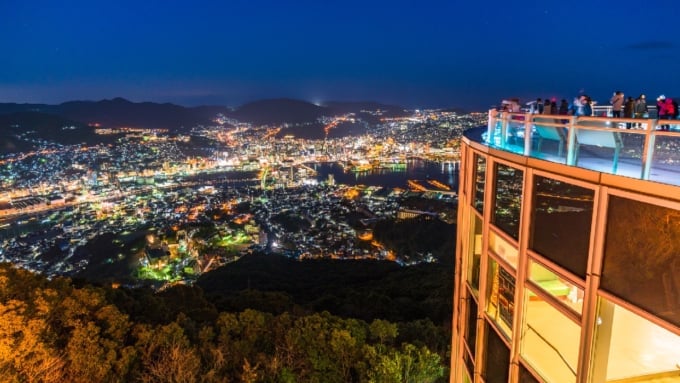
Rising above Nagasaki City is Mount Inasa, standing at 333 meters. Its observation deck offers a night view so famous that it’s been dubbed the “10 Million Dollar Night View,” ranked among the top three in the world alongside those in Hong Kong and Monaco.
From the top, you can see Glover Garden, Chinatown, Nagasaki Station, and more—a breathtaking panorama that seems straight out of a painting. Around the summit, numerous restaurants and hotels let you fully enjoy this romantic nightscape. After a day of sightseeing, let the dazzling night view soothe your weary spirit.
Name: Mount Inasa
Address: 1331 Ohama-cho, Nagasaki City, Nagasaki Prefecture
Official Site: http://www.nagasaki-tabinet.com/guide/115/
7. Dejima Dutch Trading Post Ruins
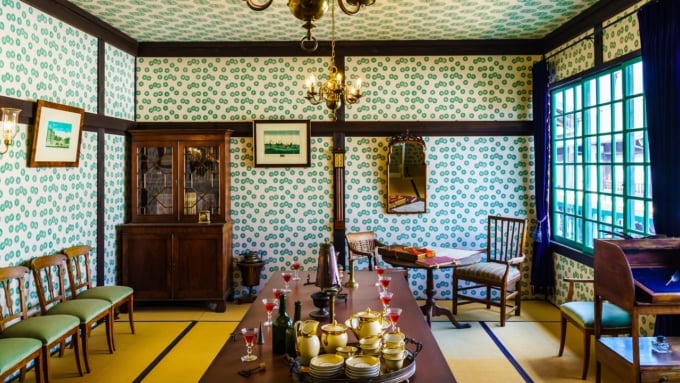
Once the sole gateway for European trade during Japan’s period of national isolation, Dejima was a man-made island that served as a trading post. Although much of the area was reclaimed after the late Edo period, the ruins of the Dutch Trading Post faithfully recreate the buildings and daily life of that era.
A highlight is the “Captain’s Room,” where the Dutch trading post chief once lived. With Western-style cuisine displayed on a table set on tatami mats, the atmosphere is a charming blend of Japanese and Western influences. Outside, parts of the traditional building are painted in a vivid light blue, adding to its nostalgic allure.
Also on-site are the former Dejima Naval School and the former Nagasaki Club, as well as a 1:15 scale model of the island itself—a delightful spot to explore.
Name: Dejima Dutch Trading Post Ruins
Address: 6-1 Dejima-cho, Nagasaki City, Nagasaki Prefecture
Official Site: http://www.city.nagasaki.lg.jp/shimin/190001/192001/p000535.html
8. Nagasaki Dejima Wharf

Just a short walk from the Dejima Dutch Trading Post Ruins, Nagasaki Dejima Wharf is a tourist and gourmet spot where you can dine with a view of Nagasaki Port.
The wharf is lined with numerous restaurants and cafés, offering everything from fresh local seafood to Italian-style bars.
At night, the area is illuminated, creating a fantastical atmosphere distinct from daytime. After dining, take a leisurely stroll along the wooden deck and enjoy a moment of solitude. Combine a visit here with a tour of the retro Dejima Dutch Trading Post for a well-rounded Nagasaki experience.
Name: Nagasaki Dejima Wharf
Address: 1-1-109 Dejima-cho, Nagasaki City, Nagasaki Prefecture
Official Site: http://dejimawharf.com/
9. Gunkanjima (Hashima)
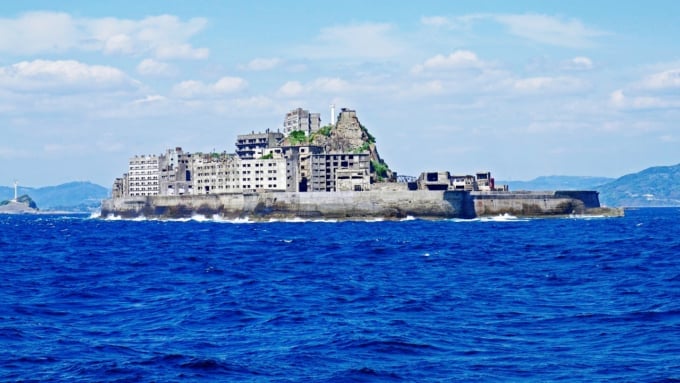
Gunkanjima, also known as Hashima, is a famous tourist spot located approximately 20 km offshore from Nagasaki Port. You’ve likely heard its name before—it was once a thriving coal mining hub and was one of Japan’s most densely populated areas, with a population density nine times that of Tokyo at its peak.
Since the mines closed around 1974, the island has been preserved in its abandoned state, captivating visitors as a stark, haunting ruin. To visit Gunkanjima, it is best to join a tour designed for tourists, which allows you to experience the romantic relics of its past in full.
Name: Gunkanjima (Hashima)
Address: Takashimamachi, Nagasaki City, Nagasaki Prefecture
Official Site: http://www.gunkanjima-concierge.com/index.html
10. Nagasaki Shinchi Chinatown
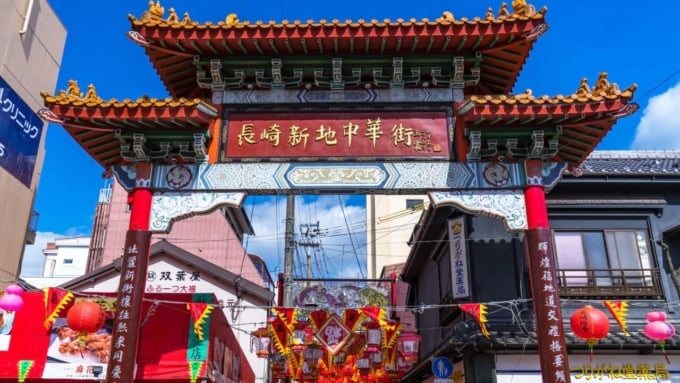
Nagasaki Shinchi Chinatown, Japan’s first Chinatown, is counted among the three major Chinatowns in Japan along with those in Yokohama and Kobe.
Here, you’ll find not only typical Chinese restaurants but also local specialty eateries serving Champon and Sarameshi—dishes unique to Nagasaki. It’s an ideal spot for a lunch break amid sightseeing. For dessert, try strolling while sampling Chinese sweets such as Daizuki Mochi (a dense, sweet rice cake) or Marakao (a steamed cake with a Chinese twist). After indulging in the culinary delights of Nagasaki Shinchi Chinatown, set out to explore more of Nagasaki’s attractions.
Name: Nagasaki Shinchi Chinatown
Address: 10-13 Shinchi-cho, Nagasaki City, Nagasaki Prefecture
Official Site: http://www.nagasaki-chinatown.com/
11. Fuuto Park
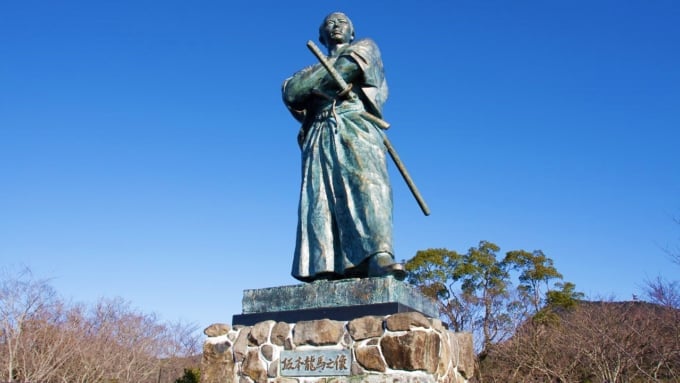
Located atop Mount Fuuto (on the opposite side of Inasa-yama), Fuuto Park offers a unique perspective on Nagasaki. This park is famous as a photography spot, featuring a bronze statue of Ryoma Sakamoto and the tomb of photographer Ueno Hiko, who captured images of Ryoma and other prominent figures from the Bakumatsu period.
Not only is Fuuto Park a popular day-time attraction, but its night views provide a different angle on the city. Imagine what Ryoma, who dreamed of a better world, might have felt as he looked out over Nagasaki from here. In spring, cherry blossoms bloom; in summer, hydrangeas flourish—making it an ideal spot to escape the bustle of the city and immerse yourself in nature.
Name: Fuuto Park
Address: Irarimachi 3-510-6, Nagasaki City (and surrounding areas)
Official Site: http://www.nagasaki-tabinet.com/guide/100/
12. Nagasaki Kameyama Shacho Memorial Hall
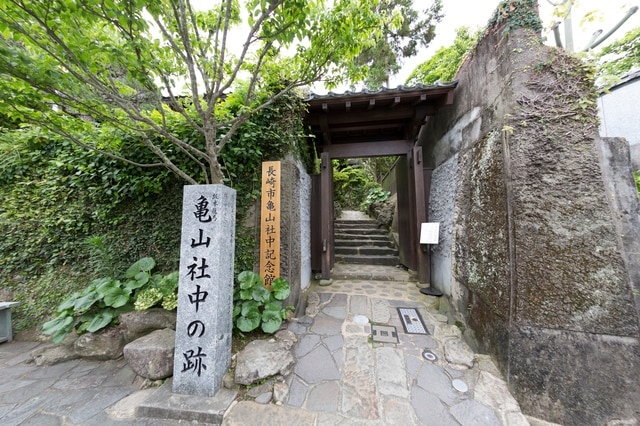
Located on the site of Japan’s first joint-stock company known as Kameyama Shacho, the Nagasaki Kameyama Shacho Memorial Hall has been faithfully recreated to resemble the original conditions. Inside, you can view items cherished by Ryoma—such as the boots and pistols he was said to have favored—making it a must-see for Ryoma enthusiasts. The building itself, preserved as a remnant of Kameyama Shacho, exudes a strong historical atmosphere that appeals to all visitors.
Name: Nagasaki Kameyama Shacho Memorial Hall
Address: 2-7-24 Irarimachi, Nagasaki City, Nagasaki Prefecture
Official Site: http://www.city.nagasaki.lg.jp/kameyama/
13. Shian Bridge
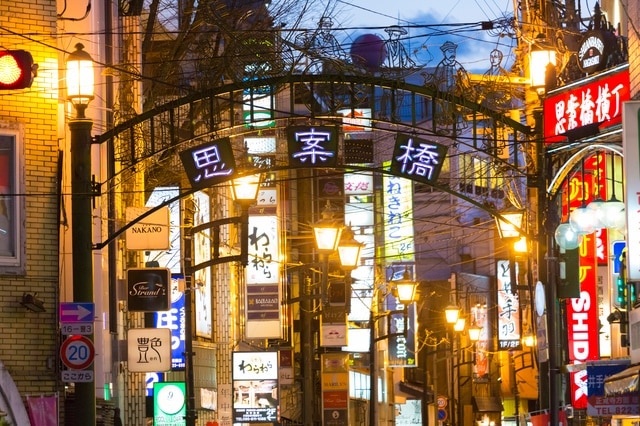
Shian Bridge is the pride of Nagasaki’s bustling downtown. Despite its name, there is no actual bridge called Shian Bridge; rather, it is the name of the entire downtown area.
Today, the area is lined with a variety of restaurants—mainly serving Japanese and Chinese cuisine—and is always busy with both locals and tourists. One of the top recommendations here is to try “takufuku” cuisine, a banquet-style meal blending Japanese, Western, and Chinese elements—a unique culinary experience reflecting Nagasaki’s international character.
Another local specialty in the area is “Turkish Rice,” a popular B-grade dish featuring spaghetti, pork cutlet, and pilaf served together. It’s the perfect snack when you want to enjoy a taste of Nagasaki on the go.
Name: Shian Bridge
Address: Aburayacho (Shian Bridge Bus Stop), Nagasaki City, Nagasaki Prefecture
Official Site: http://www.at-nagasaki.jp/spot/98/
14. Urakami Church
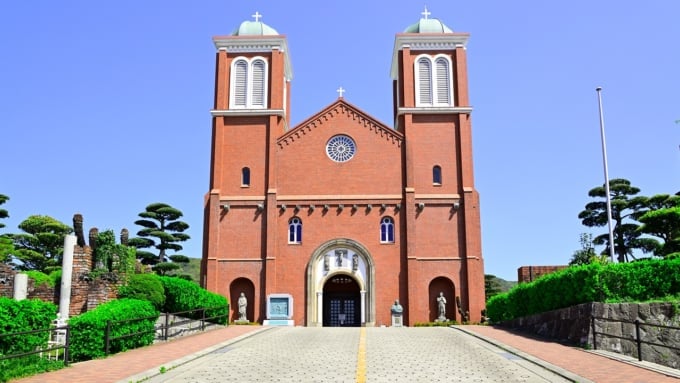
Alongside Oura Church, Urakami Church is another renowned Catholic church in Nagasaki and is one of Japan’s most famous. Originally completed in 1925, it was once the largest church in the Orient. However, it was completely destroyed by the atomic bomb 20 years later and later rebuilt to restore its beautiful appearance.
Inside the church, the statue of the Virgin Mary that survived the bombing is preserved as a symbol of peace. This statue has become internationally famous as a symbol of peace and has been taken on pilgrimages to the Vatican, Spain, and even to Chernobyl in Belarus.
Also nearby, about 500 meters away, you can view exhibits of parts of Urakami Church that were destroyed by the atomic bomb. Given its proximity to Peace Park and the Nagasaki Atomic Bomb Museum, Urakami Church is a must-visit.
Name: Urakami Church
Address: 1-79 Honomachi, Nagasaki City, Nagasaki Prefecture
Official Site: http://www1.odn.ne.jp/uracathe/
15. Nagasaki Confucius Temple
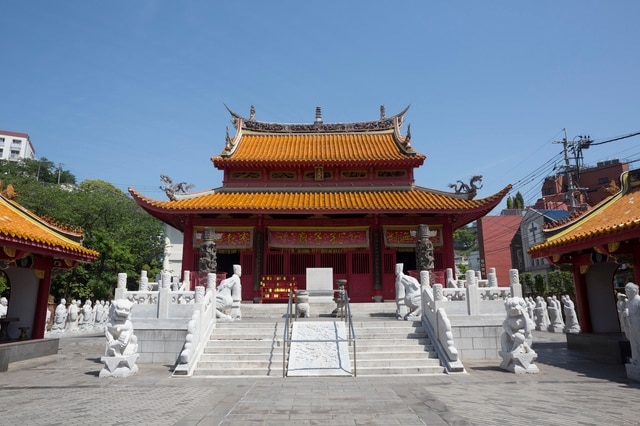
For a taste of China that is distinct from Chinatown, visit Nagasaki Confucius Temple. Built in 1893, this mausoleum is dedicated to Confucius, the founder of Confucianism. Although Confucius temples exist throughout Japan, Nagasaki’s is the only one built by Chinese people in Japan.
The most impressive part is the Daisei-den, which has remained undamaged since its construction, retaining its original appearance. Inside, you’ll see a magnificent statue of Confucius and ancestral tablets, all of which are a feast for the eyes.
The adjacent Chinese History Museum exhibits many cultural artifacts, including some designated as national treasures, and its displays are updated annually, making each visit a new experience.
Name: Nagasaki Confucius Temple
Address: 10-36 Oura-cho, Nagasaki City, Nagasaki Prefecture
Official Site: http://nagasaki-koushibyou.com/nagasaki-confucius-temple.html
16. Higashiyamate Western-Style Residential District
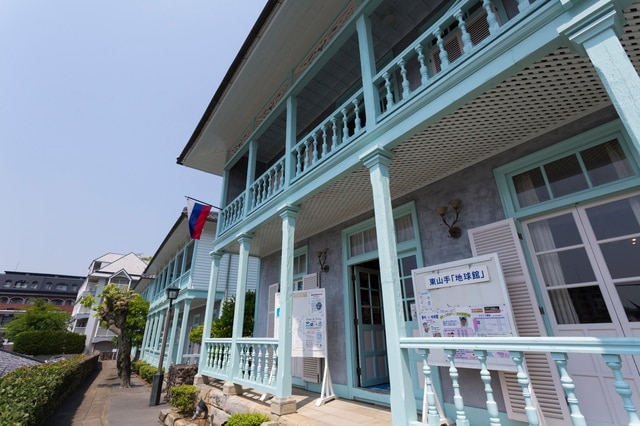
Constructed in the 20th year of the Meiji era, this residential district was built as a housing complex for foreigners stationed in Nagasaki. While it is not extravagant, its modest yet charming retro appearance has continued to captivate visitors. The buildings, featuring traditional Japanese tiled roofs alongside Western-style doors and windows, perfectly embody a blend of Japanese and Western influences—a unique feature of international Nagasaki.
Among the seven buildings in the district, one—known as “Chikyukan”—has been converted into a restaurant offering cuisine from around the world, covering Asia, Europe, the Americas, and Africa. Since the chef changes regularly and the menu is limited, it is wise to check the website in advance. This space also serves as a venue for international exchange, where you can join English conversation classes and various other events.
Name: Higashiyamate Western-Style Residential District
Address: 6-25 Higashiyamatecho, Nagasaki City, Nagasaki Prefecture
Official Site: http://www.nagasaki-tabinet.com/guide/86/
17. Megane Bridge
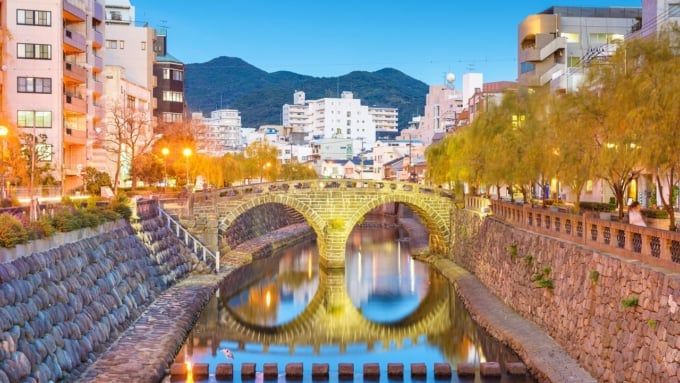
Chosen as one of Japan’s three famous bridges, Megane Bridge is a popular landmark in Nagasaki. Its name comes from the fact that when its reflection appears on the water, it resembles a pair of glasses. Its modest yet elegant appearance adds a touch of nostalgia.
The area surrounding Megane Bridge is known as Nagasaki’s historic downtown, where you’ll find quaint restaurants and cafés—hidden gourmet spots waiting to be discovered. Whether you prefer a leisurely stroll to admire the bridge and its surrounding streets or a culinary tour, create your own unique sightseeing route.
Name: Megane Bridge
Address: Uonochō, Nagasaki City, Nagasaki Prefecture
Official Site: http://www.nagasaki-tabinet.com/guide/95/
18. Bunmeido Sohonten
Introduced to Nagasaki in the 16th century by the Portuguese, castella has become a Nagasaki specialty enjoyed by both tourists and locals alike. Bunmeido Sohonten is arguably the most famous castella shop in Nagasaki, renowned for its carefully selected ingredients and meticulous production methods. Not only is the castella outstanding, but the shop’s exterior is also a must-see—a stately building in dark tones exuding timeless elegance.
Name: Bunmeido Sohonten
Address: 1-1 Edomachi, Nagasaki City, Nagasaki Prefecture
Official Site: http://www.bunmeido.ne.jp/
19. Shooken Main Store
Shooken, one of the “big three” castella shops alongside Bunmeido and Fukusaya, is a venerable establishment that has been operating since the Edo period. Their castella is known for its subtle sweetness, moist texture, and simple, unpretentious flavor.
In addition to their standard castella, they offer varieties such as Chocolate Castella and Matcha Castella made with Uji Gyokuro and sencha. The second floor features a café called “Seviria,” where you can leisurely enjoy castella in a retro, atmospheric setting.
Name: Shooken Main Store
Address: 3-19 Uonochō, Nagasaki City, Nagasaki Prefecture
Official Site: http://www.shooken.com/
20. Amu Plaza Nagasaki
Amu Plaza Nagasaki is the station building attached to JR Nagasaki Station. Its first-floor souvenir corridor, “Nagasaki Omiyage Kaidō,” houses 16 shops offering a wide variety of delicious Nagasaki specialties!
Among them, the store “Dragon Deli” is especially fun to browse, offering a range of unique souvenirs available only in Nagasaki. Whether you’re after consumable items or keepsakes that will last, this is the perfect place to do some final souvenir shopping before continuing your exploration of Nagasaki.
Name: Amu Plaza Nagasaki
Address: 1-1 Onomachi, Nagasaki City, Nagasaki Prefecture
Official Site: http://amu-n.co.jp/
◎ Summary
From historical landmarks that evoke a deep sense of the past to bustling shopping areas, we have introduced a wide range of attractions that showcase the unique charm of Nagasaki City. Find the spots that appeal to you and fully enjoy your tour of Nagasaki!
RELATED ARTICLES
REGIONS
CATEGORIES
FEATURED ON Nagasaki
-
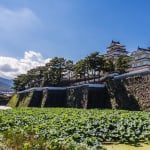
6 Recommended Sightseeing Spots in Shimabara Onsen – Enjoy Sightseeing in the Hot Spring Town of the City of Water
-
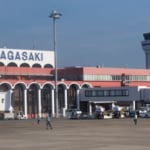
5 souvenirs you can buy at Nagasaki Airport! Find lots of delicious Nagasaki treats!
-
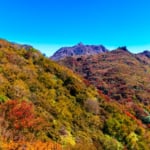
24 recommended spots to visit in Minamishimabara City, the site of the Shimabara Rebellion!
-
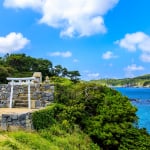
10 Recommended Hotels in Tsushima! Near Geospots to Enjoy Both the Sea and the Mountains
-
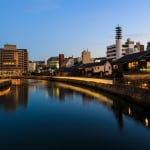
Top Attractions at Dejima, Nagasaki – Explore the History of Japan’s Isolation Period
MOST POPULAR ON Nagasaki
-
 1
1Doha: Must-see Attractions in the Capital of Qatar
-
 2
2Toronto: 10 Things to do in this Picturesque Canadian City
-
 3
3Amarillo: A City Famous for It’s Amazing Canyons, Great History and Music
-
 4
4South Korea: Dazzling Scenery, Rich Culture and Fascinating History
-
 5
5Kuwait: A Country in Middle East Asia Famous for Hot Sand Dunes and Stunning Cityscape

